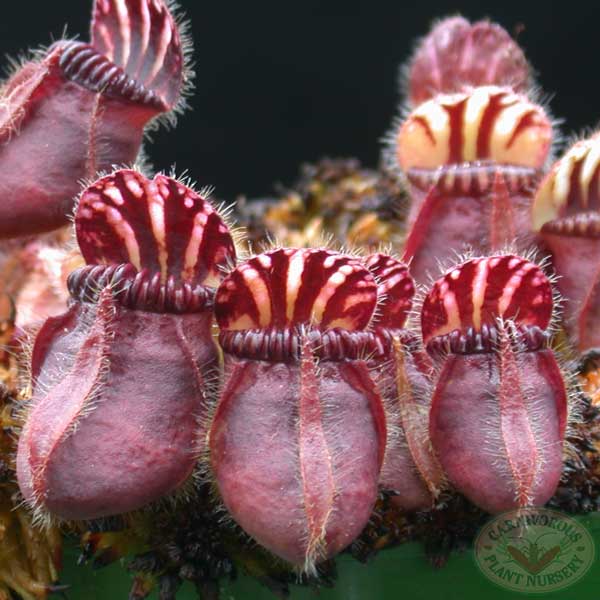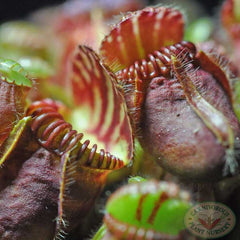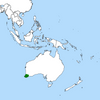
Cephalotus
Cephalotus follicularis
Cephalotus, Australian Pitcher Plants, are small and striking pitcher plants. They are perennial carnivorous plants with charming, small, hairy, slipper like pitchers that form a rosette of traps. Each trap is actually a modified carnivorous leaf, a pitfall trap, with bottoms filled with digestive fluid. New rosettes are produced each Spring from numerous dormant eyes on the older, thicker roots. They are native to the peaty marshlands of coastal southwestern Australia, near Albany, hence the name Albany Pitcher Plant or Western Australian Pitcher Plant. They were first discovered by Europeans in 1802, by John Brown on the HMS Investigator Expedition. Antique prints from this era are available.
Cephalotus like Dionaea (Venus Flytrap) is a monotypic genus with only 1 species, though numerous cultivars are sometimes available including: Czech Giant, Hummer's Giant and Eden Black. It has two types of leaves; small, pointed, lance shaped leaves that are non carnivorous, and more common in early Spring, and the carnivorous moccasin shaped traps. These pitchers are up to 2" (5 cm), and lie back at an angle of 45°. A thick, cup shaped hood with small translucent windows, closely covers the opening. The "mouth" is lined with inward pointing teeth or furrows that can take on a burgundy or maroon color. The front of the pitcher has a winged, "ant runway" similar to Nepenthes, but much smaller in scale. The trap is attached to the root by a long, sometimes winding petiole or stem. The traps lure, catch and digest small crawling insects, such as ants. Though the traps are passive (no moving parts), they actually catch many insects. Flowers are small, greenish white on long scapes in late Spring.
A note about cultivars. Cephalotus responds differently to different growing conditions. It may grow larger, or smaller, redder or greener depending upon warmth, moisture, and lighting. This is typical of any plant, but Cephalotus seems to be particularly sensitive. Don't be surprised if your growing conditions produce plants that are different than typical forms for a cultivar or it reverts back to the typical form without its cultivar characteristics. Because of this there is much debate about the appropriateness of named cultivars in the first place. Carnivorous Plant Nursery acknowledges this and offers varieties because of grower's interests.
Cephalotus are typically propagated from divisions of the root stock, leaf or trap pulls, and tissue culture. Seeds are rare in cultivation, and it can take a while to get a good size plant, even years. Cephalotus roots can be brittle and sensitive to disturbance. They benefit from being undisturbed in peaty, well drained soil. Shipping and transplanting can be challenging. Keep the roots damp and pot up immediately upon receipt. We take care in wrapping bare-root plants, but it is suggested to have them shipped potted.



 |
 |
 |
| Cephalotus range is SW Australia | Climatograph for Albany, Australia | Cephalotus follicularis from Van Houtte, Flore Serres des Jardins de l'Europe, Vol 3, Plate 280, 1847. |

